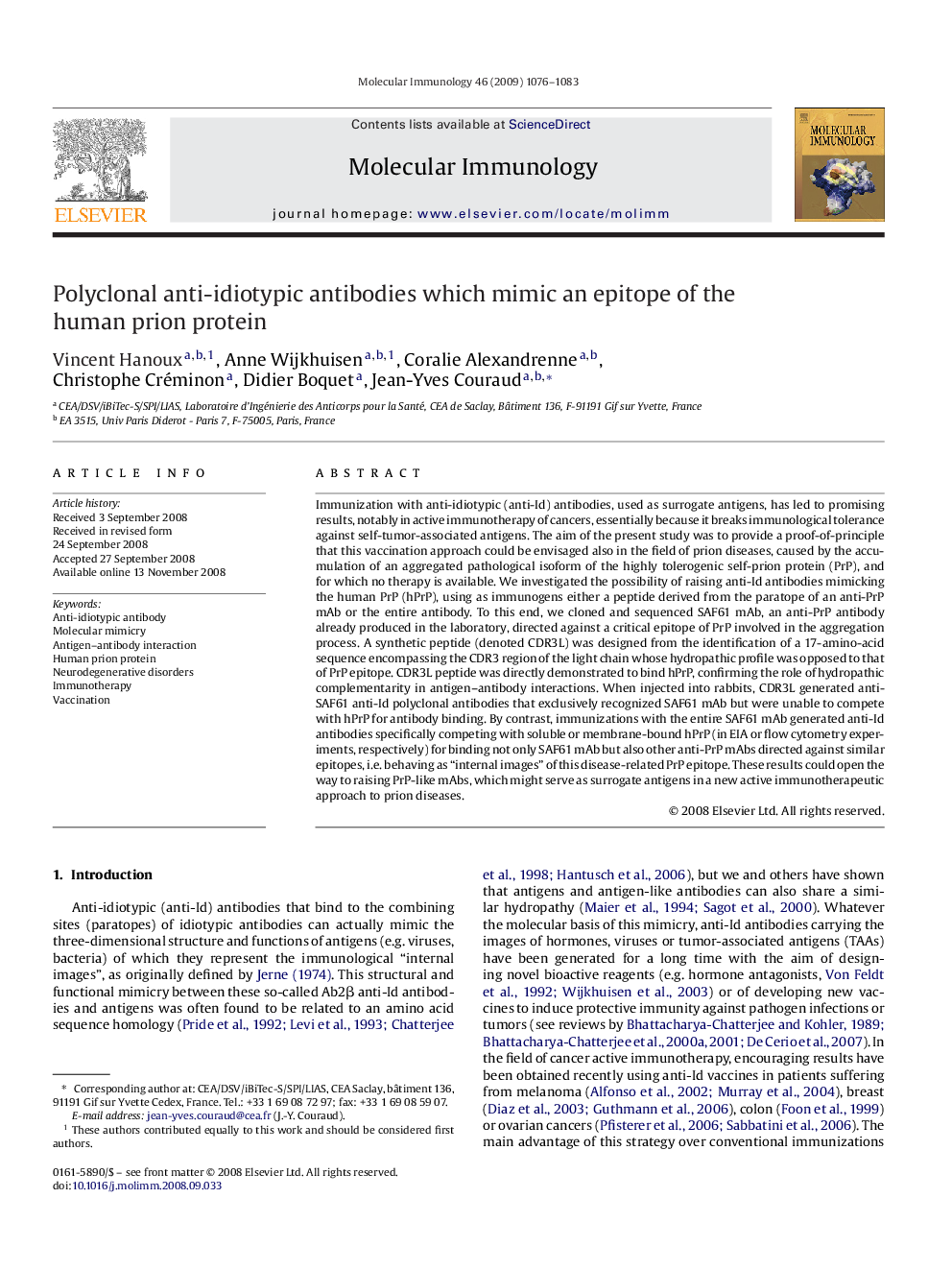| کد مقاله | کد نشریه | سال انتشار | مقاله انگلیسی | نسخه تمام متن |
|---|---|---|---|---|
| 5918260 | 1163847 | 2009 | 8 صفحه PDF | دانلود رایگان |

Immunization with anti-idiotypic (anti-Id) antibodies, used as surrogate antigens, has led to promising results, notably in active immunotherapy of cancers, essentially because it breaks immunological tolerance against self-tumor-associated antigens. The aim of the present study was to provide a proof-of-principle that this vaccination approach could be envisaged also in the field of prion diseases, caused by the accumulation of an aggregated pathological isoform of the highly tolerogenic self-prion protein (PrP), and for which no therapy is available. We investigated the possibility of raising anti-Id antibodies mimicking the human PrP (hPrP), using as immunogens either a peptide derived from the paratope of an anti-PrP mAb or the entire antibody. To this end, we cloned and sequenced SAF61 mAb, an anti-PrP antibody already produced in the laboratory, directed against a critical epitope of PrP involved in the aggregation process. A synthetic peptide (denoted CDR3L) was designed from the identification of a 17-amino-acid sequence encompassing the CDR3 region of the light chain whose hydropathic profile was opposed to that of PrP epitope. CDR3L peptide was directly demonstrated to bind hPrP, confirming the role of hydropathic complementarity in antigen-antibody interactions. When injected into rabbits, CDR3L generated anti-SAF61 anti-Id polyclonal antibodies that exclusively recognized SAF61 mAb but were unable to compete with hPrP for antibody binding. By contrast, immunizations with the entire SAF61 mAb generated anti-Id antibodies specifically competing with soluble or membrane-bound hPrP (in EIA or flow cytometry experiments, respectively) for binding not only SAF61 mAb but also other anti-PrP mAbs directed against similar epitopes, i.e. behaving as “internal images” of this disease-related PrP epitope. These results could open the way to raising PrP-like mAbs, which might serve as surrogate antigens in a new active immunotherapeutic approach to prion diseases.
Journal: Molecular Immunology - Volume 46, Issue 6, March 2009, Pages 1076-1083